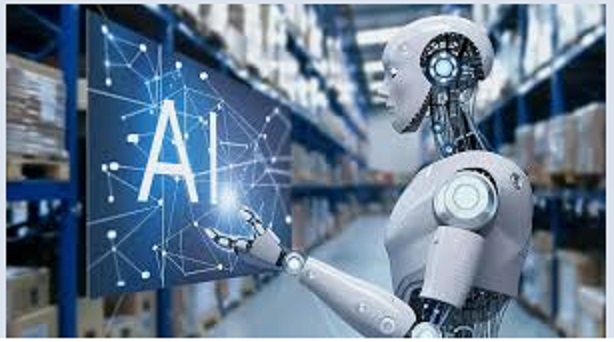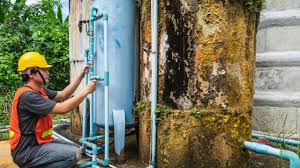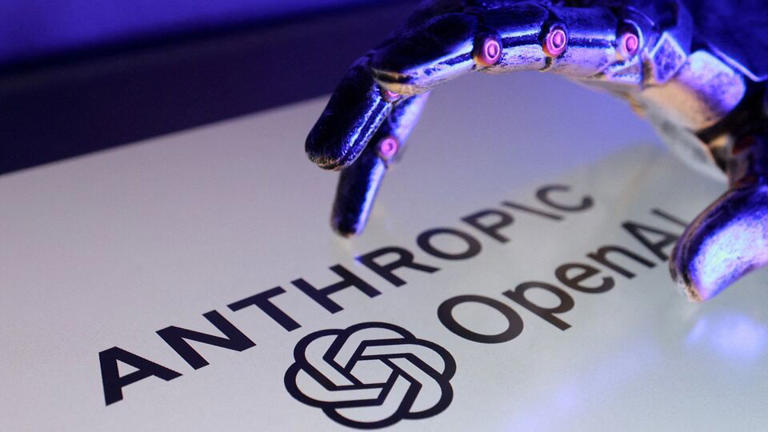Stories you may like
Artificial Intelligence Robot: The Fusion of AI and Robotics
The integration of artificial intelligence and robotics is setting a new standard in how machines interact, learn, and work alongside humans. From factory floors to healthcare operating rooms, AI-powered robots are performing complex, repetitive, and even dangerous tasks with speed and accuracy. As robotics and artificial intelligence evolve, their synergy is not just about automation—it’s about building machines that think, adapt, and communicate like a human.
By combining robotics’ mechanical precision with AI’s cognitive power, the world is witnessing the rise of intelligent robots capable of functioning semi- or fully autonomously in the real-world. The implications stretch across industries—from logistics and defense to medicine and customer service—revolutionizing productivity, safety, and innovation.
1.Understanding The Core Of Robotics And Artificial Intelligence
Artificial intelligence focuses on designing software capable of learning, adapting, and making decisions. Robotics, on the other hand, is concerned with designing and building physical machines that perform actions based on programmed instructions or sensor input.
When combined, AI and robotics give birth to AI-powered robots that can analyze data, learn autonomously, and interact using natural language processing (NLP). These robots are no longer limited to fixed specific tasks. They are evolving into human-like, intelligent machines that can adapt to new environments and even provide personalized services.
This union—often referred to as AI in robotics—is laying the foundation for autonomous systems that work efficiently alongside humans, whether in warehouses, hospitals, or homes.
2. How AI Is Used In Robotics
The application of artificial intelligence in robotics enhances the capabilities of robots in several areas:
Computer Vision
With AI technologies, robots use computer vision to recognize objects, interpret surroundings, and make decisions. This is crucial in manufacturing, where robots identify defective items or perform detailed inspection with greater precision than human operators.
Natural Language Processing and Conversational AI
Conversational AI powered by NLP enables robots to interact using human language, allowing human-robot interactions to be more intuitive. Virtual assistants, service robots, and even humanoid robots can now engage in human-like interactions, respond to voice commands, and assist in customer service.
Machine Learning and Autonomy
AI allows robots to generalize from past experiences using machine learning. Instead of relying on fixed programming, robots learn autonomously, fine-tuning their behavior to improve productivity and efficiency over time.
Decision-Making and Automation
With advanced analytics and algorithm design, ai-powered machines can compute, plan, and automate complex decision-making processes. For instance, surgical robots like Da Vinci use AI-enabled decision trees to support surgeons during delicate procedures.
3. AI-Powered Robots Across Industries
Robotics and AI are transforming industries by streamlining operations and ensuring consistency. Let’s look at prominent use cases across sectors:
Industrial Robotics
In factories, robots equipped with AI perform high-speed, repetitive tasks with minimal error. Cobots (collaborative robots) work alongside humans, lifting heavy objects and handling tasks autonomously, reducing physical strain and human error.
Healthcare
AI-powered robots are used for surgeries, patient assistance, and rehabilitation. With conversational capabilities, they help elderly patients with reminders and check-ins. Robotic devices like Da Vinci assist in minimally invasive surgeries, pushing the boundaries of precision.
Logistics and Warehousing
Autonomous mobile robots navigate warehouse aisles, picking and packing orders with the help of computer vision and AI algorithms. This improves throughput and addresses labor shortages in the supply chain.
Defense and Security
AI robotics is employed for surveillance, bomb disposal, and border security. These machines operate semi-autonomously, ensuring the safety of human personnel in dangerous tasks.
Customer Service and Retail
Service robots equipped with conversational AI are revolutionizing in-store experiences by answering questions, offering product suggestions, and enhancing the shopping journey.
4. The Future Of AI And Robotics
The future of AI and robotics lies in their ability to surpass their current limitations and unlock new applications. As AI technologies evolve, robots can perform more complex cognitive tasks, moving beyond just physical labor.
In the coming years, we can expect:
- Smarter humanoid robots capable of emotional recognition
- Fully autonomous delivery systems
- Personalized robotic assistants in homes
- Real-time edge computing to reduce latency in decision-making
- Robots that consume less power while becoming more adaptable
The rise of AI-powered robotics will not only revolutionize the way we work and live but also challenge ethical norms, regulatory frameworks, and economic models.
5. Challenges In AI Robotics Integration
While the promise is vast, integrating AI and robotics comes with challenges:
- High cost of designing and building intelligent machines
- Ensuring ethical use and transparency in AI decision-making
- Managing data privacy, especially in healthcare and personal robots
- Bridging the human-robot interactions gap through better UX design
- Creating robots that can adapt to new tasks without reprogramming
Despite these challenges, the momentum behind artificial intelligence robot development shows no signs of slowing down. Continuous technological advancements and demand for intelligent machines are driving the innovation forward.
Conclusion
The convergence of artificial intelligence and robotics is reshaping our world. AI-powered robots are no longer futuristic concepts—they are real-world tools enhancing productivity and efficiency across industries. From humanoid robots that engage in conversational AI to robotic arms that assist in surgeries, AI in robotics is proving that machines can do more than repeat—they can learn, adapt, and revolutionize.
As AI allows robots to make decisions, communicate, and perform tasks autonomously, they are becoming indispensable in solving modern challenges. The future of AI and robotics holds exciting possibilities—from transforming healthcare and manufacturing to personalizing services at home.
While questions about ethics, regulation, and workforce impact remain, the direction is clear: Robotics and AI are not just enabling machines, they are redefining what machines can be. And in doing so, they are fundamentally transforming how we live, work, and connect.






User's Comments
No comments there.